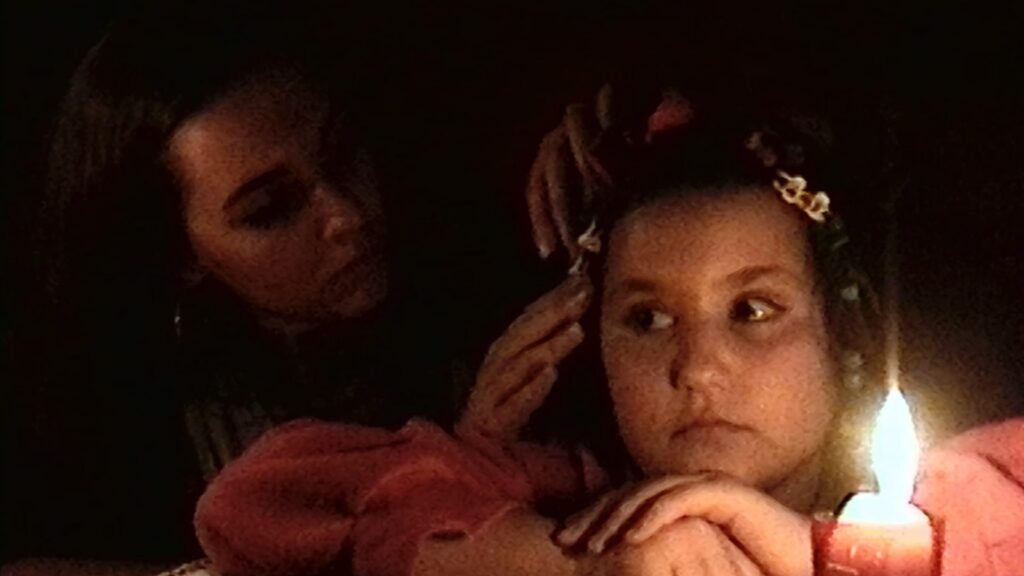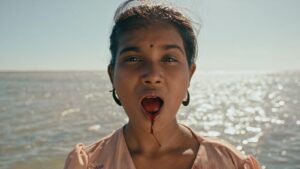Movie Title : 78 Days
Foreign Title: 78 dana
Year: 2024
Country: Serbia
Language: In Serbian with English subtitles
Directors: Emilija Gašić
The title, 78 Days, refers to the period during which NATO bombed Serbia, a part of the former Yugoslavia, in an attempt to end the Kosovo War. From late March to mid-June 1999, European states fought a war for the first time inside Europe. The film is set in a small village outside Belgrade and centers around one family, particularly the three daughters: Sonja, Dragana, and Tijana.
Sonja, a teenager on the verge of graduating, dreams of studying fashion design, while Dragana, slightly younger, is just beginning to explore her sexuality. The youngest, Tijana, is a charismatic, lively pre-teen who serves as the heart of the family. Together with their father, a carpenter, and their mother, an accountant, they lead a pleasant bourgeois life in a small house surrounded by fields and a stream.
Like many families in that era, they own a Hi8 video camera, which they use casually. None of them has any serious filmmaking ambitions—the camera is just part of their play, a symbol of the times. The events are daily- cutting of hair (beautiful scene), making pancakes, and they often reuse tapes, recording over old footage. It’s precisely this casual, unpolished use of the camera that gives the film its unique power and authenticity.
As the war begins, the father is drafted, but the family finds comfort in the unexpected break from routine. They spend time together—talking, gossiping, and teasing one another. Despite the looming war, their life feels almost idyllic. The arrival of distant relatives fleeing Belgrade begins slowly to crack this ideal picture. The youngest, Lela, becomes a follower of the dynamic, sometimes young dictator Tijana, while the two older girls are drawn to Mladen, a handsome young relative. Tensions arise as the relationships within the family subtly shift, paralleling the war’s quiet but persistent presence.
Toward the end, the war gets too close and the fragile harmony breaks, —but, as in life, it mends, and the war ends. Life goes on.
The end.
The film’s strength lies less in its plot and more in how it’s made and told. The entire narrative is crafted from the Hi8 video as if someone found these tapes 25 years later and tried to make sense of that time. The passage of time is marked by the date stamps on the footage, giving the film a sense of authenticity and nostalgia.
To make this beauty clearer, here are a few relevant facts to take into account while watching:
The casting for the 4 girls, all non actresses took over a year
Part of the research was into how kids used Video cameras, pre-teens, for example, rarely used the zoom function. This was used in crafting the shots according to the character.
Each scene was shot on average 4 times.
The young girls were not given a script, and for every 2 takes the director changed their lines, to achieve authenticity in acting
Although shot in one location, it took almost 2 months of rehearsals and 20 days of shooting.
78 Days captures both the powerful sentimentality of family life and the bittersweet nature of memories. The filmmaker's childhood recollections and the collective memory of the time merge to create a beautifully compelling story. It’s a reflection of how humanity often tries to hold onto the good moments, but, just like in real life, the things we repress—especially the frightening ones—inevitably surface.




